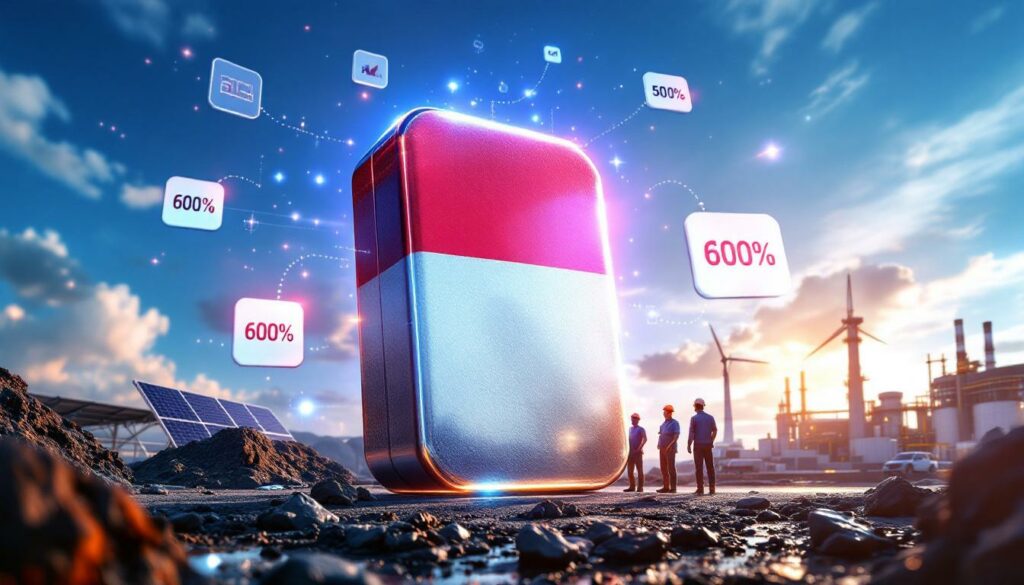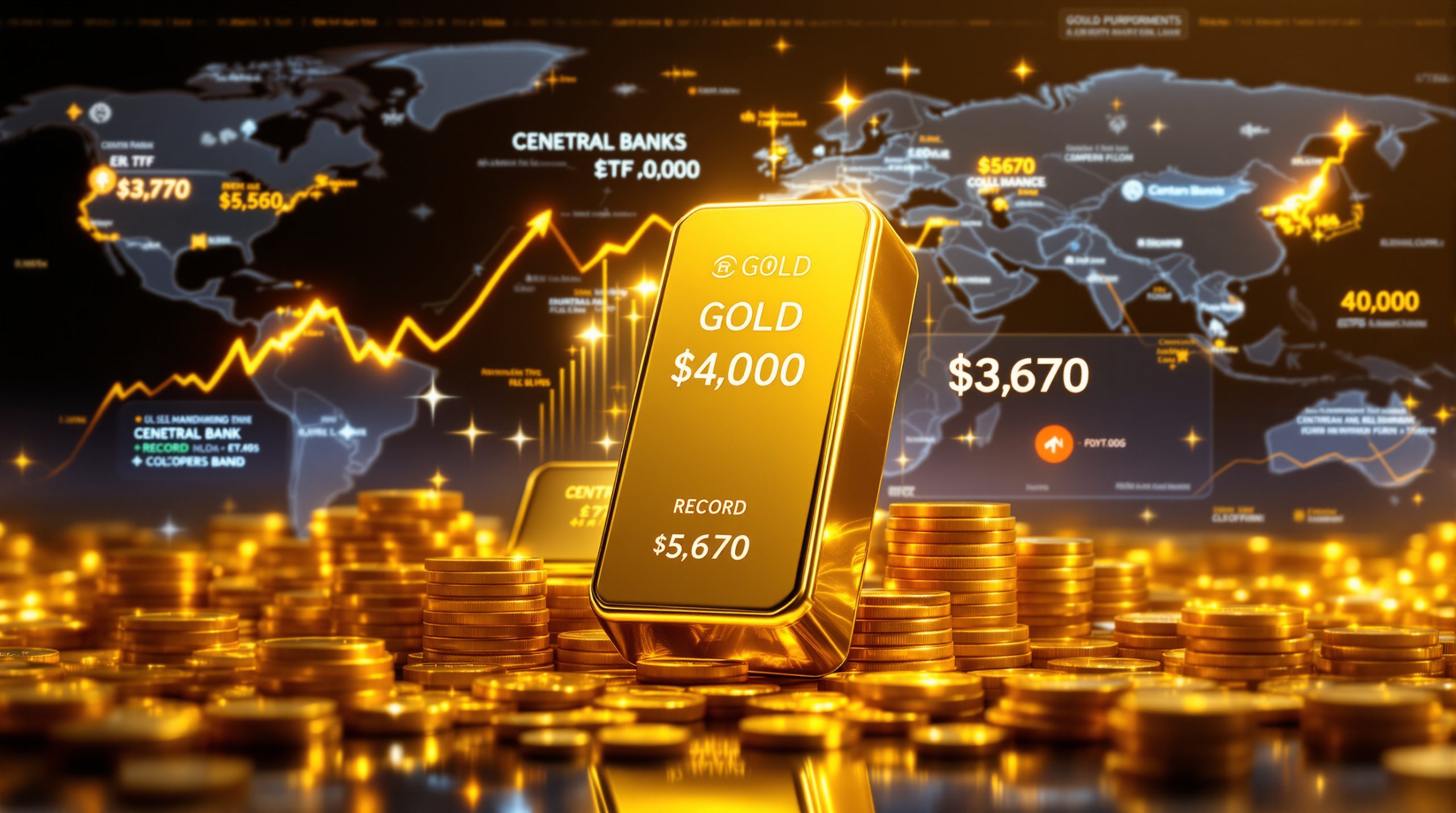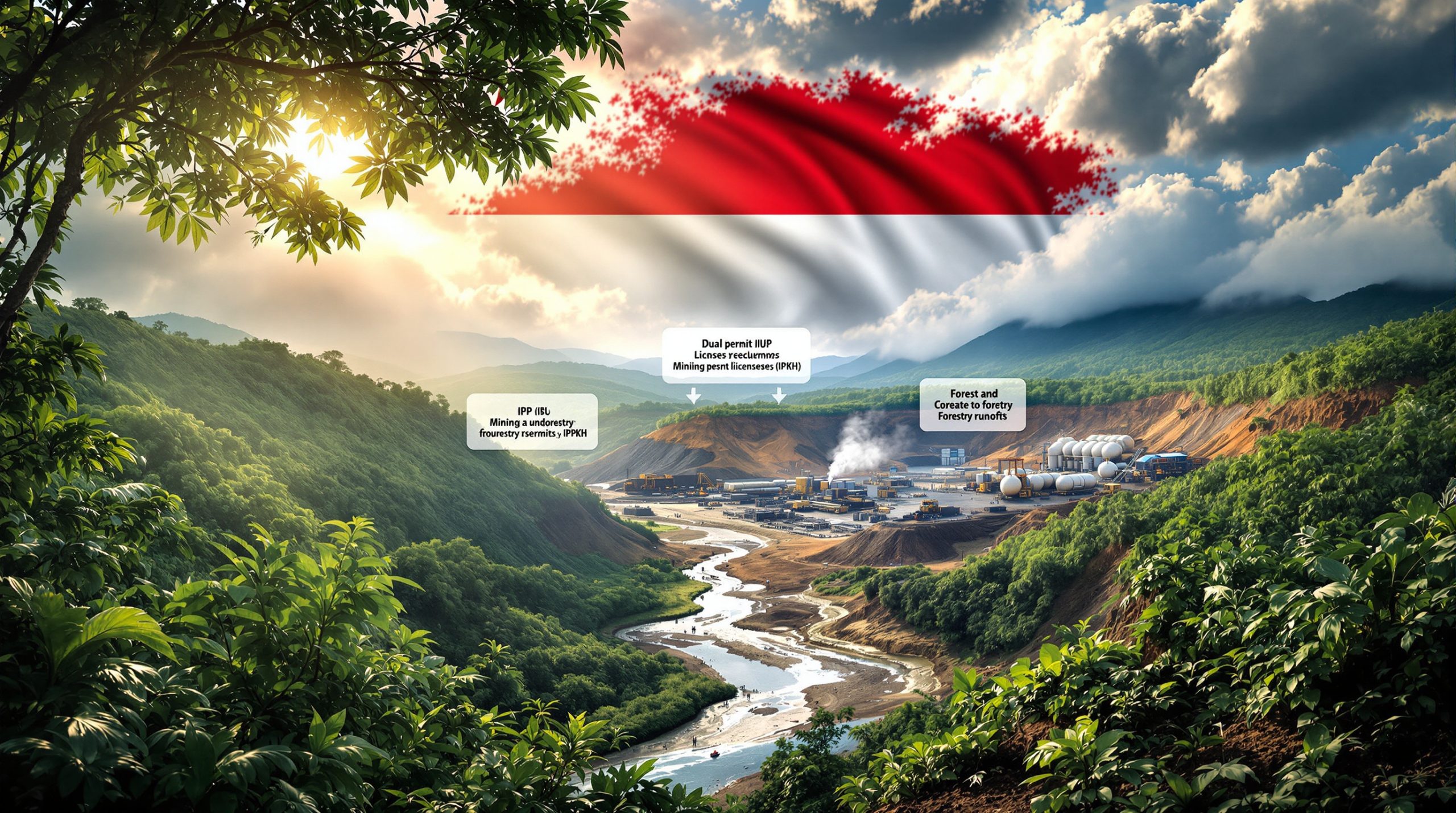Key Insights from Indonesia's Aluminum Forum: Strategic Growth and Global Market Shifts
The recent Aluminum Forum of Indonesia Critical Minerals Conference & Expo 2025 revealed significant developments in Indonesia's aluminum sector, highlighting dramatic consumption growth projections, technological innovations, and strategic partnerships. Industry leaders shared insights on how Indonesia is positioning itself within the evolving global aluminum landscape while addressing sustainability challenges.
Indonesia's Aluminum Industry: Ambitious Growth Targets Amid Rising Demand
Indonesia's aluminum industry stands at a pivotal moment, with consumption projected to increase dramatically over the coming decades. According to Melati Sarnita, Business Development Director at PT Indonesia Asahan Aluminium, "Indonesia's aluminum consumption is projected to surge by approximately 600% over the next 30 years. Demand will particularly rise in sectors like EVs and renewable energy."
Addressing the Import-Dependency Challenge
The current aluminum supply landscape in Indonesia reveals a significant dependency on imports:
- Domestic production currently contributes only 46% of the country's aluminum supply
- Imports account for the remaining 54% as of 2024
- Each megawatt of photovoltaic solar deployment requires approximately 21 metric tons of aluminum
- This dependency creates both challenges and opportunities for domestic producers
Indonesia's Strategic Aluminum Development Roadmap
To address the growing demand-supply gap, Indonesia has established ambitious production targets:
- 900,000 metric tons annual aluminum production target by 2030
- Development of a 2 million metric ton capacity alumina refinery (SGAR Phase II)
- Accelerated downstream bauxite processing initiatives
- Strategic government oversight through MIND ID, with operational management transferred to Danantara's operating holding company under Government Regulation No. 15/2025
"Building a resilient aluminum ecosystem requires strategic planning across the entire value chain—from bauxite mining to finished aluminum products. Indonesia's approach combines regulatory frameworks with industrial incentives to achieve self-sufficiency." — Industry panel consensus
Global Aluminum Market Outlook: Structural Shifts and Regional Dynamics
The global aluminum market continues to be driven primarily by industrial production trends, with certain regions showing divergent performance patterns.
Industrial Production as the Primary Market Driver
Analysis presented by Duncan Hobbs, Research Director at Concord Resources Ltd, highlighted the strong correlation between industrial output and aluminum consumption:
- Year-over-year changes in industrial production explain over 75% of annual aluminum consumption variations
- Transportation and construction sectors demonstrate the highest aluminum dependency
- Global industrial output is expected to return to normal trend levels by 2025
- Potential for accelerated production could boost aluminum consumption, though significant downside risks remain
China's Dominant Position and Structural Challenges
China's outsized influence on global aluminum markets can't be overstated:
- China accounts for more than 60% of global aluminum consumption
- The Chinese market faces structural challenges including real estate market decline, manufacturing overcapacity, and price pressures
- Export restrictions further complicate the outlook for Chinese producers
- These factors may slow future growth in the world's largest aluminum market
European Market: Limited Recovery from Low Base
The European aluminum market, representing approximately 10% of global consumption, shows mixed recovery signals:
- European consumption expected to stabilize around 7.4 million metric tons in 2024
- This figure represents near decade-low consumption levels
- Southern European markets projected to outperform Northern European counterparts
- Recovery drivers include energy price corrections, monetary easing, and fiscal stimulus measures
Bauxite and Alumina Markets: Shifting from Undersupply to Surplus
The global bauxite and alumina markets are undergoing significant transitions, with supply-demand balances shifting toward surplus conditions.
Bauxite Market Entering Surplus Territory
According to Cathy Liu, Global Aluminium Market Analyst at SMM Global UK Ltd, the bauxite market will experience substantial oversupply:
- Global bauxite surplus of approximately 12 million metric tons expected by 2025
- Market shifting from undersupply to oversupply
- Guinea's increased production contributing significantly to global surplus
- Tightening policies in Guinea unlikely to cause immediate supply deficits
- Long-term cost risks remain despite current surplus conditions
China's Alumina Market: Capacity Surge and Domestic Production Decline
China's alumina sector shows contradictory trends of expanded capacity alongside reduced domestic bauxite production:
- Projected supply surplus of 4.11 million metric tons in China by 2025
- Downward pressure expected on domestic prices due to oversupply
- National bauxite production in China declined by 44.6% since 2019
- Production in Shanxi and Henan regions expected to partially recover in 2025 after sharp declines
- Environmental and safety inspections driving production volatility
Sustainability Imperatives: Climate, Biodiversity, and Human Rights
The aluminum industry faces mounting pressure to address environmental and social impacts throughout its value chain.
Climate Action and Biodiversity Protection
Cameron Jones, Director of Assurance at the Aluminium Stewardship Initiative, emphasized several critical sustainability priorities:
- Industry-wide action needed to mitigate climate change impacts and limit temperature increases to 1.5°C
- Protection of biodiversity and ecosystem services, particularly in mine reclamation innovation
- Increased reporting and disclosure requirements for environmental impacts
- Growing stakeholder pressure for transparent environmental performance
Circular Economy and Social Responsibility
Beyond environmental concerns, the industry must address resource efficiency and human rights:
- Reducing metal losses and developing innovative waste management solutions
- Promoting efficient resource utilization and recycling
- Strengthening local action capabilities and building relevant capacities
- Conducting rigorous supply chain due diligence to protect human rights
- Increasing scrutiny from governments, media, and civil society on ESG standards
Technological Innovations: Efficiency Gains and Carbon Reduction
Technological advancements are playing a crucial role in improving efficiency and reducing the environmental footprint of aluminum production.
Anti-Oxidation Ceramic Coating: A Carbon-Saving Breakthrough
Guojing Hu, Technical Director at Jiangsu Green Harmony, presented innovative coating technology with significant benefits:
- High-temperature anti-oxidation ceramic coating for prebaked anodes
- Average carbon savings of 15 kg/t-Al per ton of aluminum achieved
- Significant reduction in carbon emissions and carbon residue salvage
- Automatic intelligent online spraying device launched in July 2023
- Technology solving the "last mile" challenge in coating implementation
"Our anode anti-oxidation coating solves the 'last mile' challenge in electrolytic aluminum production, cutting emissions and carbon residue. The technology is deployed across global smelters with remarkable results." — Guojing Hu
Strategic Resource Development for Future Supply
High-quality bauxite projects are being developed in regions with favorable conditions:
- Projects like Australasian Metals' Monogorilby in Central Queensland feature high-grade bauxite (up to 52.8% alumina content)
- Successful projects prioritize transportation access and railway connectivity
- Well-developed infrastructure including power grid access and water supply is critical
- Government support and mining-friendly regulatory environments enable bauxite project benefits
Global Partnerships Strengthening Indonesia's Aluminum Sector
Indonesia's aluminum industry is benefiting from diverse collaborative relationships spanning government, industry, and research institutions.
Key Industry Collaborations
The conference highlighted numerous strategic partnerships:
- Indonesian Ministry of Foreign Affairs providing government support
- Co-organization with Indonesia Nickel Miners Association (APNI)
- Partnerships with Jakarta Futures Exchange and Sxcoal
- Industry leaders from companies including Hydro, PT Antam, and PT Indonesia Asahan Aluminium
- International expertise from Concord Resources, Aluminium Stewardship Initiative, and Herbert Smith Freehills
Investment and Development Opportunities
Several organizations are advancing key projects and research initiatives:
- PT Kalimantan Aluminium Industry developing regional projects
- Australasian Metals Ltd advancing strategic bauxite resources 350km from Brisbane
- Collaboration between Jiangsu Green Harmony Energy and academic institutions
- Industry-university-research partnerships with institutions like Wuhan University of Science and Technology
- International market analysis support from firms like Macquarie and SMM Global
Key Industry Statistics: Benchmarking Indonesia's Aluminum Sector
The following data points provide critical context for understanding Indonesia's position in the global aluminum landscape:
| Metric | Value | Context |
|---|---|---|
| Indonesia's projected aluminum consumption growth | ~600% | Over next 30 years |
| Aluminum required for PV solar | 21 mt | Per megawatt installed |
| Indonesia's import ratio (2024) | 54% | Of total aluminum supply |
| Domestic production contribution (2024) | 46% | Of total aluminum supply |
| Target aluminum production (2030) | 900,000 mt | Annual production goal |
| Planned alumina refinery capacity | 2 million mt | SGAR Phase II |
| Global bauxite surplus projection (2025) | ~12 million mt | Shift from undersupply to oversupply |
| Alumina supply surplus projection (2025) | 4.11 million mt | Creating downward price pressure |
| China's share of global aluminum consumption | >60% | Dominant market position |
| European aluminum consumption (2024) | ~7.4 million mt | Near decade-low levels |
| Carbon savings from anti-oxidation coating | 15 kg/t-Al | Per ton of aluminum produced |
| Chinese bauxite production decline | 44.6% | Since 2019 |
Indonesia's Aluminum Industry: Frequently Asked Questions
What factors are driving Indonesia's aluminum demand growth?
Indonesia's aluminum demand is primarily driven by rapid growth in electric vehicles and renewable energy sectors, particularly photovoltaic solar installations which require approximately 21 metric tons of aluminum per megawatt. The country's overall aluminum consumption is projected to increase by about 600% over the next three decades, creating substantial opportunities for domestic producers.
How is Indonesia addressing its current reliance on aluminum imports?
Indonesia is implementing a strategic plan to accelerate downstream bauxite processing and advance aluminum industrialization. The government has set a target to achieve annual production of 900,000 metric tons of aluminum by 2030, supported by a refinery with 2 million metric tons annual capacity of alumina production through the SGAR Phase II initiative.
What role does government policy play in Indonesia's aluminum sector development?
The Indonesian government maintains strategic control of the aluminum sector through its holding of Series A Dwiwarna shares in MIND ID via the Ministry of State-Owned Enterprises, while operational management has been transferred to Danantara's operating holding company under Government Regulation No. 15/2025. This structure ensures continued government oversight while enabling operational efficiency.
How will global bauxite market conditions affect Indonesia's aluminum industry?
The projected global bauxite surplus of approximately 12 million metric tons by 2025 will likely create favorable conditions for Indonesia's aluminum industry development by keeping raw material costs lower. However, the country still needs to develop sufficient domestic processing capacity to leverage these market conditions while securing long-term supply agreements with reliable producers. Furthermore, mineral beneficiation insights suggest that proper processing infrastructure will be essential for maximizing value.
Disclaimer: The projections and market analyses presented in this article represent expert opinions based on current data and trends. Actual market developments may vary due to unforeseen economic, geopolitical, or technological factors. Readers should conduct additional research before making investment or business decisions based on this information.
As the industry evolves, decarbonisation in mining and the adoption of AI in mining operations will likely play pivotal roles in transforming aluminum production processes according to the Cobalt Institute's recent industry analyses.
Ready to Spot the Next Major Mineral Discovery?
Stay ahead of the market with real-time alerts on significant ASX mineral discoveries through Discovery Alert's proprietary Discovery IQ model, turning complex data into actionable investment insights. Explore why major discoveries can lead to exceptional returns by visiting the Discovery Alert discoveries page and begin your 30-day free trial today.




